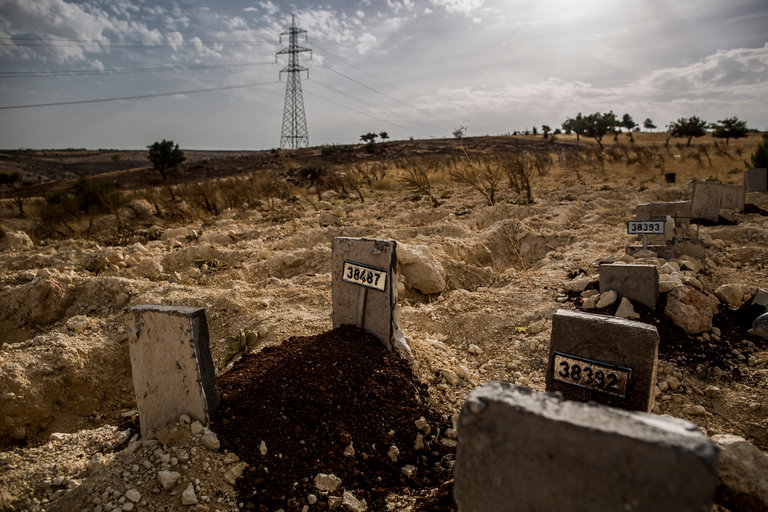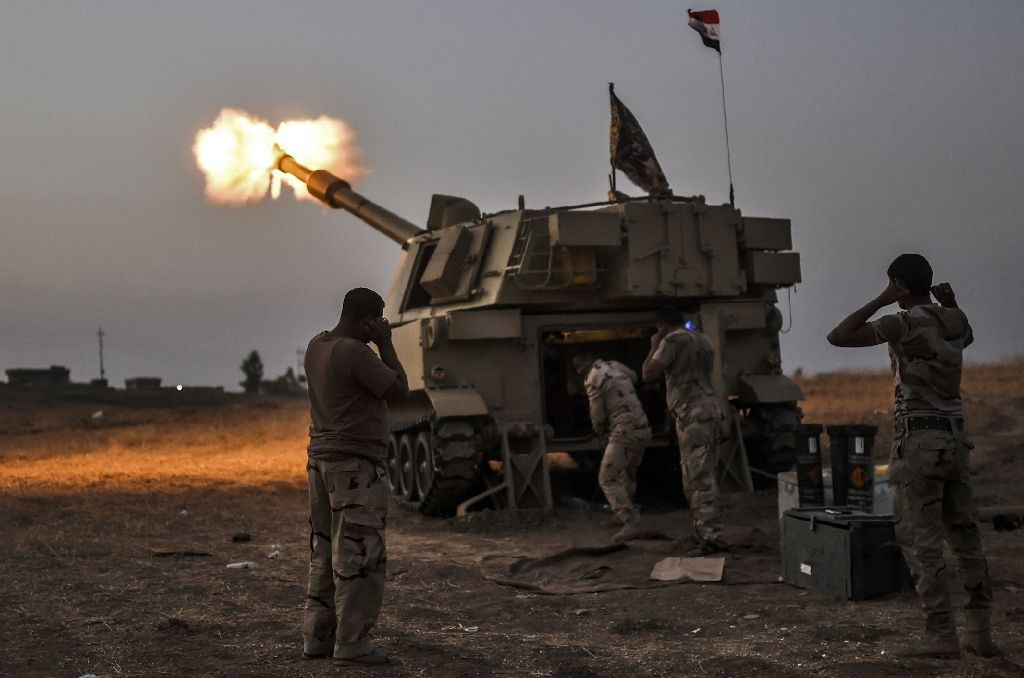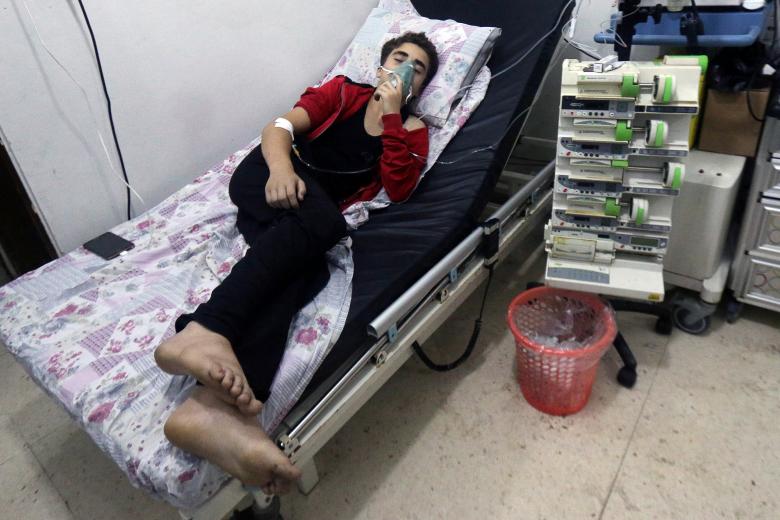
Caption:
A woman affected by what activists say was a gas attack on the town of Telminnes is transferred to Bab al-Hawa hospital, which is close to the Turkish border, to receive treatment April 21, 2014. Chlorine gas attacks in Syria this month, if proven, expose a major loophole in an international deal which promised to remove chemical weapons from Syria and suggest chemical warfare could persist after the removal operation has finished. In addition, chlorine gas that was never included on the list submitted to the OPCW is now allegedly being used on the battlefield, leading some countries to consider requesting an investigation, possibly through the United Nations. On Monday, opposition groups reported a further attack, this time 20 miles (30 km) northeast of Kfar Zeita in the town of Telminnes. Picture taken April 21, 2014. REUTERS/Amer Alfaj (SYRIA – Tags: POLITICS CIVIL UNREST CONFLICT)

Caption:
A cemetery on the outskirts of Gaziantep, Turkey. Grave No. 38487 holds the body of a 4-year-old girl who died of wounds she received when a shell containing sulfur mustard agent hit her home in Marea, Syria. Credit Bryan Denton for The New York Times

ISIS Used Chemical Arms at Least 52 Times in Syria and Iraq, Report Says
WASHINGTON — The ISIS has used chemical weapons, including chlorine and sulfur mustard agents, at least 52 times on the battlefield in Syria and Iraq since it swept to power in 2014, according to a new independent analysis. More than one-third of those chemical...Caption:
Volunteers wear gas masks during a class on how to respond to a chemical attack, in the northern Syrian city of Aleppo on Sept. 15, 2013. Photo: AFP/Getty Images

Syrian Opposition Fears Russian Plan for Largescale Aleppo Offensive
Beirut- The Syrian opposition has expressed fears that Russia’s plan for a largescale offensive on the city of Aleppo has neared its launching date under the excuse that rebels are using chemical weapons in areas that fall under the regime’s control. Meanwhile, the...Caption:

Fierce Clashes in Christian Iraqi District Al-Hamdaniya
Erbil, Qayyarah – Iraqi Forces continued to advance in al-Hamdaniya district, largest Christian city in Nineveh Valley, as part of the large military operation to liberate Mosul. The Iraqi forces broke into Qaraqosh, 15 Km to the southwest of Mosul. Iraqi Ground...Caption:
A civilian breathes through an oxygen mask at al-Quds hospital, after a hospital and a civil defence group said a gas, what they believed to be chlorine, was dropped alongside barrel bombs on a neighbourhood of the Syrian city of Aleppo, Syria, early August 11, 2016. REUTERS/Abdalrhman Ismail
